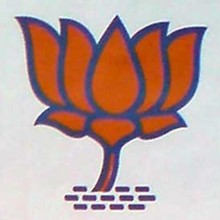 In terms of sheer magnitude and complexity, nothing on Earth can beat India’s electoral system. Indian election officials must ensure fair play in a nation of 1.15 billion souls, where a multitude of languages are spoken and infrastructure can be less-than-ideal. On top of that, India’s sheer passion for electoral politics means that minor parties number in the hundreds. In fact, according to the Electoral Commission of India, there are currently a shade over 1,000 political parties in the country, though the vast majority fall into the limbo-like category of “registered but unrecognized.” This means a party has but a bare handful of members, and thus doesn’t qualify for that most important of political privileges: an election symbol.
In terms of sheer magnitude and complexity, nothing on Earth can beat India’s electoral system. Indian election officials must ensure fair play in a nation of 1.15 billion souls, where a multitude of languages are spoken and infrastructure can be less-than-ideal. On top of that, India’s sheer passion for electoral politics means that minor parties number in the hundreds. In fact, according to the Electoral Commission of India, there are currently a shade over 1,000 political parties in the country, though the vast majority fall into the limbo-like category of “registered but unrecognized.” This means a party has but a bare handful of members, and thus doesn’t qualify for that most important of political privileges: an election symbol.
Given that India’s literacy rate is still just 61 percent, symbols mean so much to the electoral process. The Electoral Commission is tasked with assigning symbols to each party. For mainstays such as Congress and the BJP (whose lotus is depicted above), these symbols have been set in stone for years. But for upstarts and state-based parties, a lot rides on how cool a symbol they can wrangle.
And wrangle they must, since there is a concrete list of pre-approved symbols from which the parties must choose. Table IV of this document (PDF) runs them all down. And what a random lot they are—I shudder to think what minor party will someday count itself fortunate to campaign under the sign of the ice-cream cone, the battery torch, or the harmonium. Then again, if you’re the head of the Bharat Pensioner’s Front (unrecognized party number 145) or the Life Peaceful Party (#518), you’re probably happy to take what you can get.


Gramsci // Apr 10, 2009 at 10:23 am
The railway engine could have a certain futurist appeal. The ice cream cone– maybe an elitist nod to Wallace Stevens and imperialism?
And what’s up with Kerala– did they have a spate of saw incidents there or something?
Gramsci // Apr 10, 2009 at 10:25 am
As always, google before asking…
http://economictimes.indiatimes.com/News/News_By_Industry/Indl_Goods__Svs/Paper__Wood__Glass_Plastic_Marbles/Timber_industry_facing_shutdown_threat_in_Kerala/articleshow/3065677.cms
Brendan I. Koerner // Apr 10, 2009 at 10:33 am
@Gramsci: Wow, thanks for digging that up. I reckoned it was because a defunct party had used the symbol, but maybe it’s because the ECI doesn’t want to remind Keralans that times are tough.
If I was an Indian politician, I’d definitely want my party to be represented by the television. To quote Homer Simpson: “Television! Teacher, mother, secret lover.”
Gramsci // Apr 10, 2009 at 10:50 am
For some reason the Simpson line that came up for me was “Uncle Ant, Ku Klux Klam, Disgruntled Goat…” (ants, clams, and goats presumably already taken)
“Disgruntled Goat had his moments…”
The World’s Most Powerful Citizens // Apr 14, 2009 at 9:00 am
[…] been reading everything under the Sun regarding the forthcoming Indian election, a true marvel of democracy. Yesterday’s fodder was this New York Times bit on the growing political enthusiasm of […]